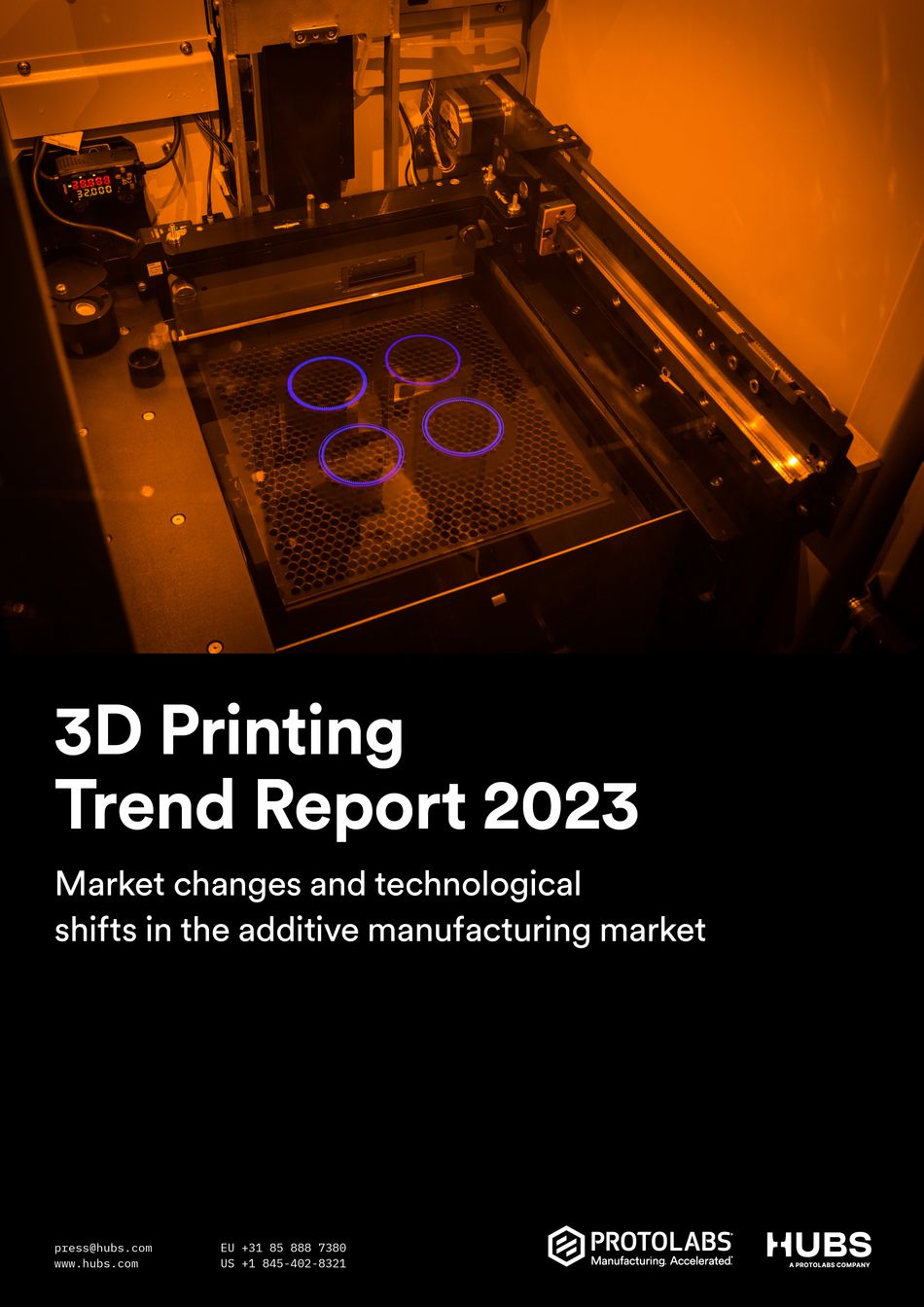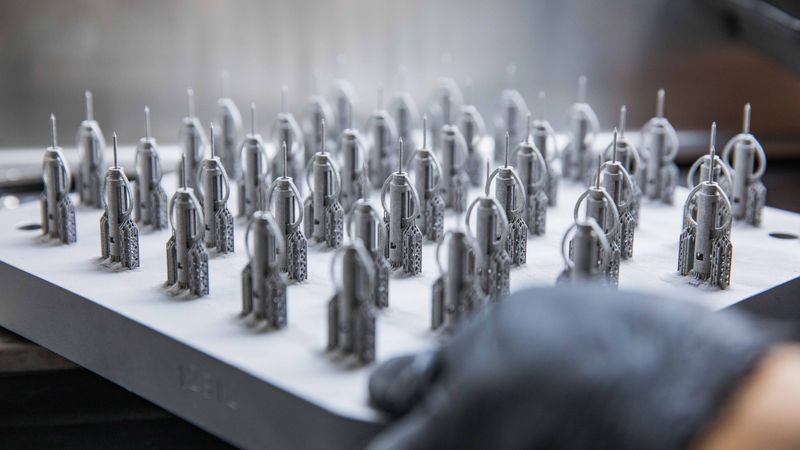3D Printing Trend Report 2023
Global online manufacturing platform Hubs has just published its 3D Printing Trend Report 2023, sharing an overview of the current state of the 3D printing industry as well as highlighting the trends that are shaping its future. Here is a summary of the report and a brief look at its key takeaways. For all the insights, download the full report below.
The evolution of a technology
In its 3D Printing Trend Report 2023, Hubs begins by tracing 3D printing’s journey, from its earliest beginnings in sci-fi to the mature technology it is today. This timeline illustrates how far the technology has come in recent decades and contextualizes the current trends the report identifies, including the latest technological advancements.
Large-format metal additive manufacturing and non-planar 3D printing are just some of the recent technological advancements the report addresses. Process automation is also an important area where advancements are being made, enabling manufacturers to establish an efficient, industrialized workflow based on additive technologies. These technological advancements and others are critical to understanding what new capabilities are on additive’s horizon.
3D printing growth indicators
As the 3D printing industry continues to evolve, it also continues to grow. In a survey conducted by Hubs in February 2023 with over 1,000 participants, a large majority (71%) of respondents said they used 3D printing more in 2022 than in 2021. This increase in usage is reflected in the 3D printing industry’s market size, which reached $17.05 billion in 2022, marking an annual growth rate of 13%.
In this year’s trend report, based on Hubs' internal data and the average CAGR forecasts from 10 leading market analysis firms, the 3D printing market is set to experience a 17% growth, reaching a value of $19.9 billion by 2023.
Zooming in on the industry, the polymer segment represents the largest share of the market value (with FDM, SLA, and SLS remaining the most widely used processes). Despite this, polymer additive manufacturing saw slower growth in 2022 than metal additive manufacturing. The metal 3D printing segment is expected to have stronger growth rates for the foreseeable future compared to polymer. For further details and figures on this dynamic, see the full report.
The report also indicates that while global 3D printer shipments dropped slightly in 2022, revenue from 3D printer sales increased, likely due to inflation and subsequent rising machine costs. The biggest decrease in printer shipments was in personal 3D printers, while industrial polymer systems experienced a marginal 2% drop. Industrial metal systems, by contrast, experienced a slight increase in shipments in 2022.
Applications and adopter industries
Hubs breaks down the leading application areas for 3D printing, and provides exclusive insights into how 3D printing adopters are currently using the technology. Prototyping remains the leading application across the board, with users benefiting from faster product development lead times and more design freedom. As the report indicates, 66% of survey participants cited prototyping as their primary use of 3D printing.
Tooling and end-use part production are important application areas too. The former allows users to enhance and customize production lines, as well as minimize machine downtimes. End-use production, which encompasses various types of manufacturing, including custom parts, low-batch production, and serial production, was cited by 21% of survey respondents as their primary application.
Turning to 3D printing adopters, Hubs highlights the primary industries that are driving the technology’s advancement and use. They are: aerospace, automotive, and medical. The report also investigates a number of other industries that are exploring additive manufacturing and are ripe for transformation, including the food, fashion, motorsports, bioprinting, and space industries.
What’s next for AM?
Looking to the future of additive manufacturing, Hubs reached out to industry experts for their insights into how cutting-edge technologies like artificial intelligence (AI) and smart materials (aka 4D printing) will play a pivotal role in shaping 3D printing’s ongoing evolution.
So what does the future of AM look like? For one, 3D printing solutions with AI-enabled capabilities like in-print monitoring have big potential for improving the process’ consistency and quality control. Other AI tools could streamline and democratize generative design tools and enhance print optimization. Broadly speaking, AI has the potential to revolutionize 3D printing and make even the most complex elements of the process more accessible.
Smart materials, also known as shape-morphing systems or 4D printing, are at the cutting edge of additive technologies. As the development of sophisticated responsive materials progresses so too does the potential of this AM subsegment. Healthcare is just one of the industries that could benefit hugely from this emerging capability, where 4D printing could facilitate applications like targeted drug delivery. Aerospace, furniture, packaging, and wearables are some other verticals that are exploring smart materials to create new and innovative solutions.
The report also looks at the pressing question of sustainability within the framework of 3D printing. Naturally, the industry should keep striving to make the technology more ecological, but the report rightly underscores the ways in which the digital manufacturing process is already greener than conventional manufacturing. From economical on-demand production, to the creation of more lightweight and fuel efficient parts, 3D printing is enabling a new way of thinking about manufacturing that is in line with broader sustainability initiatives.
Read the full report
As a still-evolving industry, 3D printing is always advancing and maturing. It is therefore important to follow the latest updates and trends to understand where the technology is and where it’s headed. The annual Hubs 3D Printing Trend Report provides evidence of 3D printing’s trajectory, along with valuable insights from industry players and 3D printing adopters.
The Hubs 3D Printing Trend Report 2023 is based on data derived from reputable sources, including its own survey, industry experts, 3D printing news and media, and market reports.


